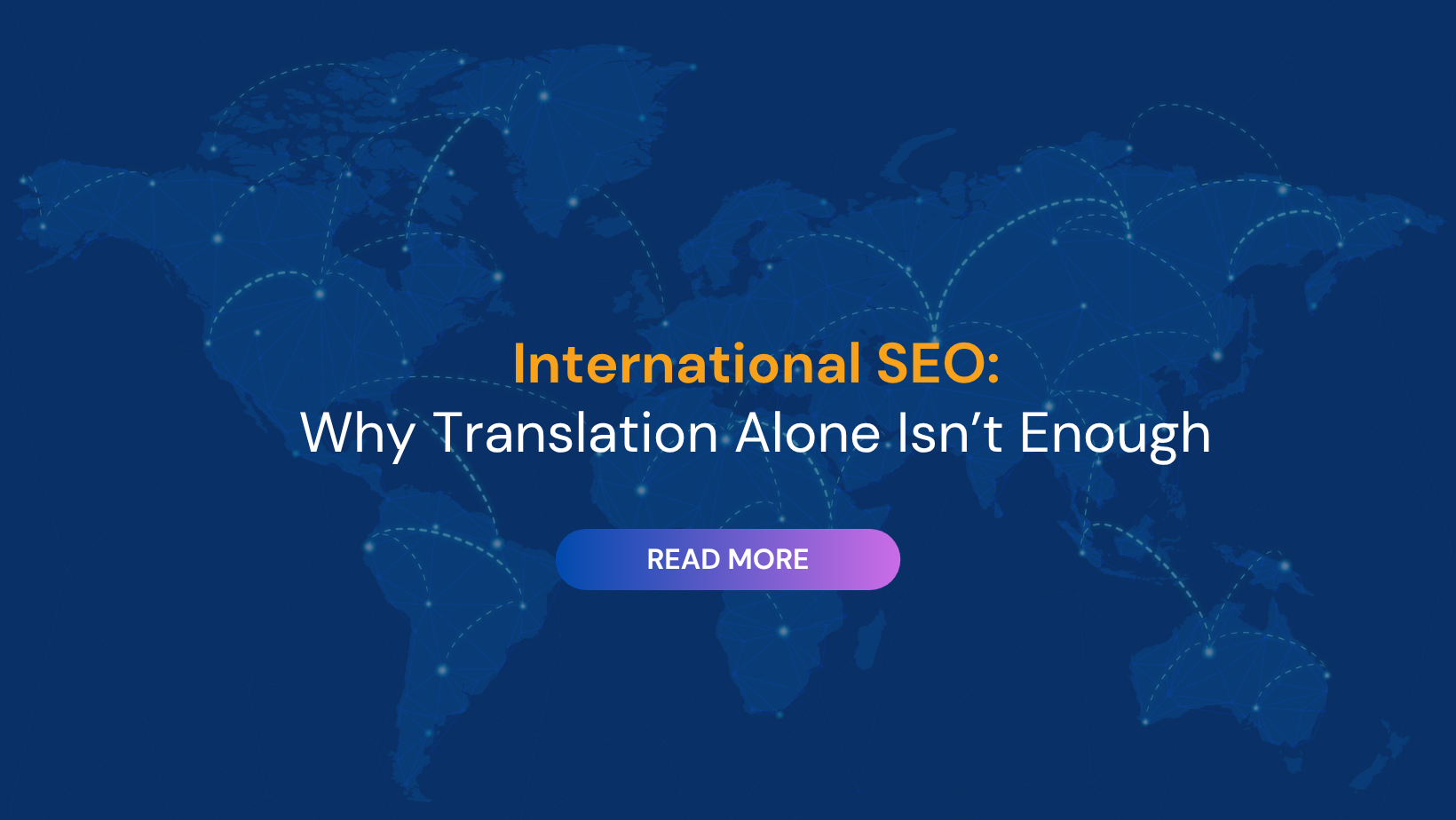
Going Global Requires More Than Just Language
Expanding internationally is a strategic move, but if your website isn’t optimized for global search engines, your content could go unseen. While translation is an important step, it’s only part of the equation. Without International SEO, even the best-translated websites fail to connect with their target audiences. This guide explains how language, strategy, and technical implementation come together to power global visibility.
Why SEO Translation Alone Isn’t Enough for Global Search Visibility
A direct translation might convey meaning, but it won’t always match the way people actually search. International SEO focuses on user intent, regional keyword behavior, and cultural search habits to craft content that ranks and resonates. Translation tells your story while SEO ensures it’s discoverable.
Localized Keyword Research: Building Search-Relevant Global Content
Not all keywords translate cleanly across borders. For instance, “online shopping” in English may differ greatly from the phrase used in German or Korean searches. Localized keyword research identifies the exact terms users type into search engines, including slang, idiomatic expressions, and long-tail queries. Without this insight, your content may be irrelevant to local audiences.
Technical SEO: Hreflang, Site Speed & Mobile Optimization
Technical infrastructure is crucial. Hreflang tags guide search engines to serve the correct language and regional page. Without them, users may land on the wrong version; or none at all. Other aspects like URL structuring, site speed in various geographies, and mobile responsiveness also influence how well your localized content performs in each target region.
Understanding Local Search Behavior in Multilingual SEO
Search behavior reflects cultural patterns. In some regions, users search in full questions (“How can I…”), while others prefer keyword-heavy queries. National holidays, pop culture references, and buying behavior influence what people search and how. Tailoring your content to reflect these patterns builds relevance and engagement.
Case Study: How Strategic Global Content Optimization Drove 60% Traffic Growth
A global retailer approached us after struggling with stagnant traffic in three international markets. Although they had translated their site, they missed local keywords and lacked hreflang implementation. After conducting keyword research, revising content, and correcting technical issues, they saw a 60% increase in organic traffic within four months. The difference? Strategy-led localization.
Best Practices for Multilingual SEO and Global Website Optimization
- Conduct region-specific keyword research
- Localize meta titles and descriptions
- Use hreflang tags accurately
- Adapt tone, visuals, and messaging for cultural relevance
- Monitor performance with local analytics tools
Bridging Language and Strategy: The Future of International SEO Services
Translation opens the door, but international SEO helps you walk through it. Successful global expansion depends on content that’s optimized, localized, and discoverable. With the right combination of language expertise and technical know-how, your message reaches and converts the right audience.
Partner with Braahmam.net for SEO-Driven Global Growth
At Braahmam.net, we merge expert translation with SEO strategy and technical implementation to ensure your content ranks where it matters most. Ready to expand your digital presence globally? Contact us to learn how we turn localization into measurable success.
FAQs
Q1. What is the difference between SEO translation and international SEO services?
SEO translation converts content with keywords in mind, while international SEO adds technical, cultural, and search behavior elements for visibility.
Q2. Why is hreflang important for global SEO?
Hreflang tags ensure that users in different regions see the correct version of your website in their language.
Q3. Can multilingual SEO increase organic traffic?
Yes. Targeting local keywords and optimizing regionally helps improve search rankings and attract the right audience.

.webp)

